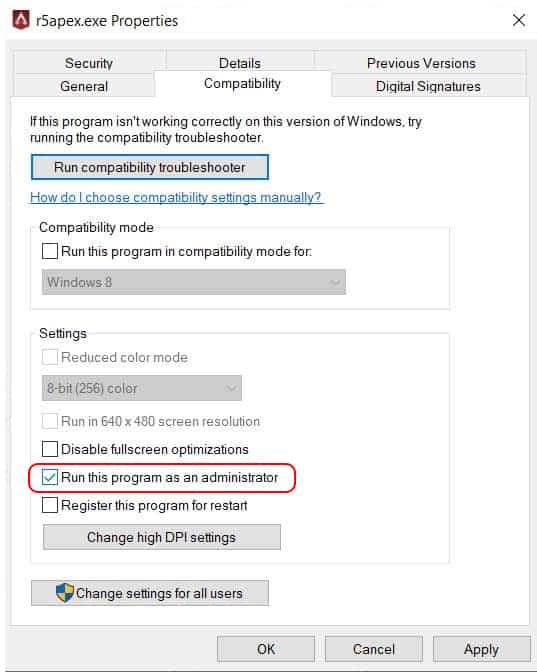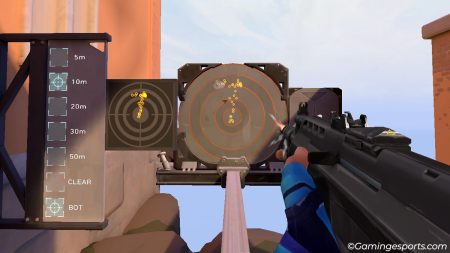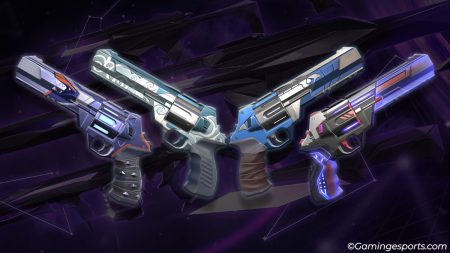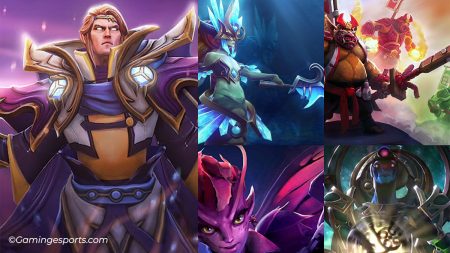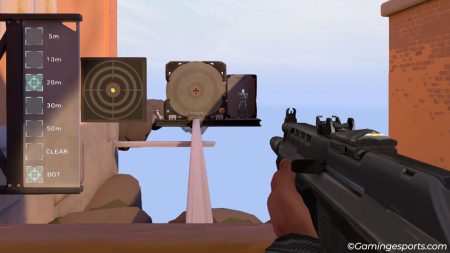People think that making it to the final circle and capturing a Victory Royale is all about skill—and that’s definitely a big part of success. However, it isn’t the only factor at play. Choosing the best gameplay settings can also make a huge difference in what you see on the screen and its performance in those tense game-making moments.
Of course, the best settings you can choose for APEX Legends will vary depending on any number of things, including your equipment. Some people can still get great frames with high settings, while people with mid-tier computer components may need to select lower settings for the same performance.
You should also consider your setup and strategy. Some suggestions may also not be suitable for all players because doing things like turning off the Steam overlay will increase your performance but removes accessibility from social and gameplay functions offered by Steam. Pick and choose which setting tweaks to make, and remember that you can always change it back if desired.
Startup Conditions
Running the Apex Legends executable as an administrator will help avoid potential problems or conflicts arising, primarily if you use screen recording or streaming programs. Rather than select APEX and instruct it to run as admin each time you start the game, go into the system settings and require it to do so each time it launches.
- Locate your APEX executable by opening the folder where APEX is installed. The file is called
r5apex.exe. - Right-click the executable and select Properties.
- Check the Run This Program as an Administrator box on the Compatibility tab.
- Click Apply, and then click OK.
When you run APEX, it will run as an administrator until you change it.
Adjusting Your Launcher
Whether you play on Steam or Origin, there is a simple tweak to the launcher you can make to improve your performance. Many games let players input a command string that tells the game what to do when it starts up. Doing this can change factors that aren’t even an option when you’re in the game’s settings.
To open the Command Line options in Origin, open your Game Library, and then choose Apex, select Settings, and choose Game Properties. Select Advanced Launch Options.
On Steam, right-click APEX in your library. Click Properties and then choose General. One option you have on this screen is to switch off the Steam Overlay, which I personally recommend. It can be easy to accidentally hit it in games, and APEX doesn’t always perform as well when it’s active.
No matter which you choose, put this line of text into the launch options area: -high +fps+max Unlimited
Each of these commands does something a little different.
-highcommand: It tells your operating system to run APEX as high-priority software. This can help give you a smoother gaming experience.+fps+max Unlimitedcommand: It removes any frame rate caps. You can replace the word Unlimited with the number of frames you want APEX to use at maximum if you choose.
Sometimes setting a frame rate cap means the game will stop at the maximum of your monitor rather than pushing harder to give you a better performance that you won’t be able to see on the screen.
Save your settings and try to launch APEX to make sure it works with the new command line instructions.
Gameplay Options
Many of the Gameplay Options are purely personal preferences. Some players like Button Hints and Default prompts, while others prefer to turn off hints and make the prompts compact. It all depends on what type of UI you prefer. Sometimes a UI with less stuff on it can make it easier to see what’s happening in the game.
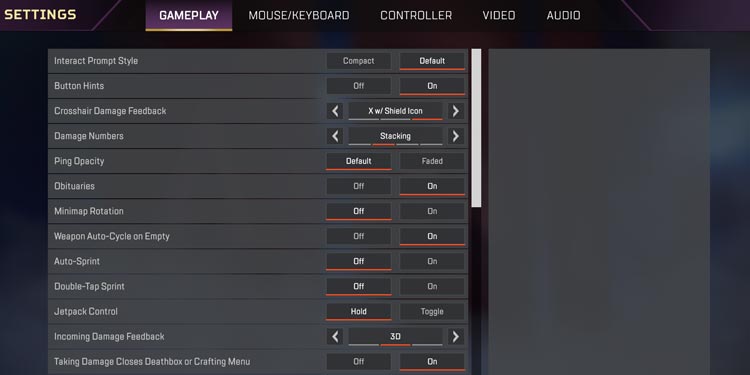
Consider turning on Performance Display at least while you’re testing different settings. It will help you monitor your frame rate and other metrics.
You can also find Accessibility Options like whether you want subtitles, colorblind modes, or changing voice chat to text.
Mouse/Keyboard and Controller Options
Options like Sensitivity, Mouse Acceleration and Invert, and Response Curve are settings based on player preference.
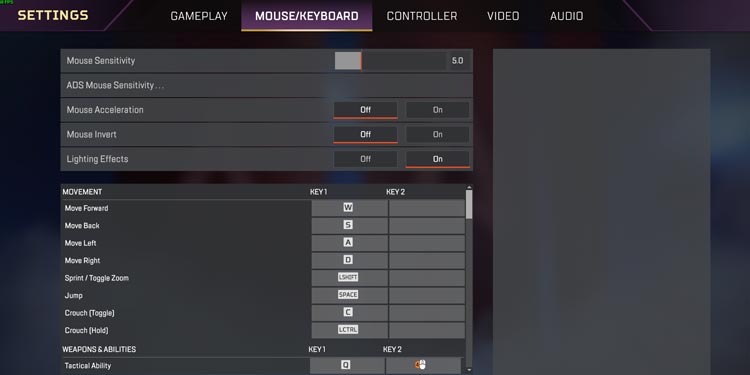
Try increasing sensitivity if you feel like you’re having issues getting your crosshair to targets quickly. If you often overshoot a mark, try lowering it.
Video Options
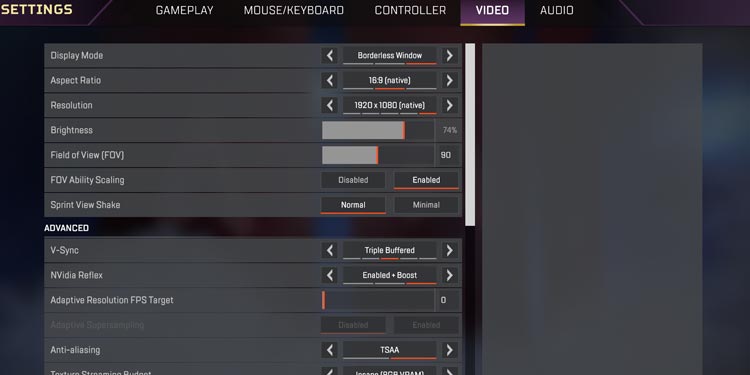
Display Mode determines how the window management works. You can choose from Fullscreen, Windowed, or Borderless Windowed. The game will perform best in Fullscreen mode, but if you need to tab out regularly, you may want to play on Borderless Windowed. The difference between that and plain Windowed is that you can’t tell it’s in Windowed mode until you attempt to tab out.
Aspect Ratio should be set to your native aspect ratio, which is 16:9 for the vast majority of players. Unless you have a very unusual setup, this is probably what you’ll choose. Look for the one that is actually labeled with Native.
Resolution should be set to your native resolution unless you have difficulty running the game on higher graphics. Changing it to a lower resolution will help your GPU, but the game will not look as detailed.
Brightness just determines how bright the screen is. Set it to your preference. The APEX tooltip says it doesn’t take effect unless the display is fullscreen.
Field of View determines how far out the camera is. It’s set to 90 by default, and for most people, that will be perfectly adequate. Some players prefer to turn it up to around 110, which can impact your performance. Try it at 90, 100, and 110 to see which view you like. You can also change FOV Ability Scaling to determine whether the value changes when specific skills change the camera effect.
Sprint Shake View determines how much things move when you sprint. You can set this to normal or minimal, but many people who play competitively prefer minimal to lower the visual changes.
Audio Options
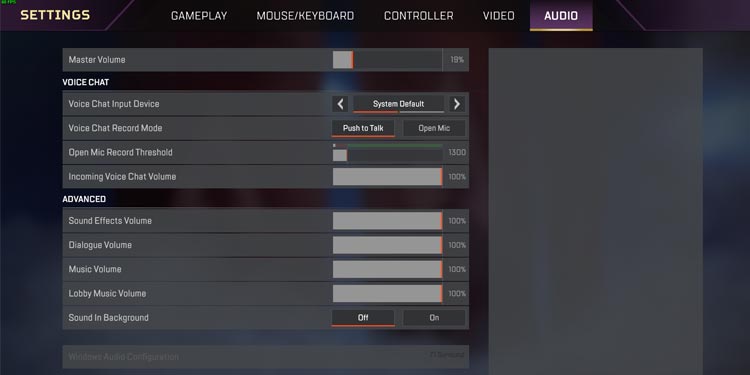
Your audio options are another personal setting. The best way to optimize the APEX audio is to mix the Advanced Sound Options until you find one that works. For example, you might want the music low but the sound effects high because it’s important to hear people coming, and music can cover nearby sounds.
Advanced Settings
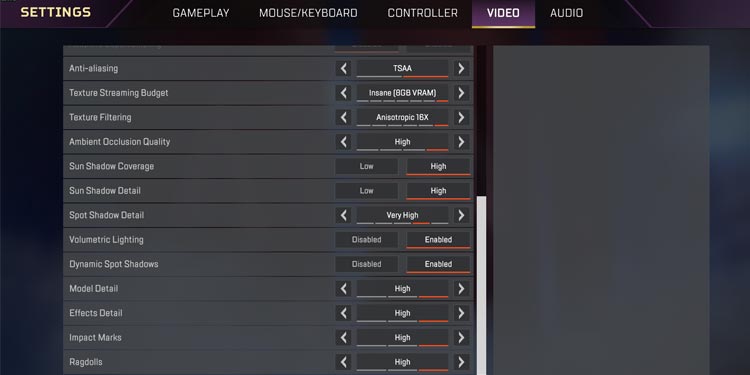
Adjust your V-Sync to account for screen tearing and FPS. When V-Sync is off, your FPS will probably be higher, but the screen tearing will increase. As you adjust your V-Sync, you’ll see the frames change and adapt. Choose the one that gives you the best frames up to your FPS cap.
Try Enabled + Boost on the NVIDIA Reflex setting. It helps lower your system latency.
Leave Adaptive Resolution FPS Target at 0 unless you have issues with your frames. If you are, set a lower target FPS like 60 instead of 90. The graphics won’t look as good, but the game should perform better. You can also ignore Adaptive Supersampling and leave it disabled.
Remember that each of these settings must be considered from the perspective of your system. If you are running a system with fewer resources, you may have to choose lower settings that won’t let APEX run at its absolute peak but will still be better for your gameplay experience.
Choose TSAA Anti-Aliasing and the highest options for Texture Streaming Budget, Texture Filtering, and Ambient Occlusion Quality. You can
The rest of the settings on the Advanced options are just how good the game will look. Increasing these to the maximum may help your gameplay because you will see more and see things more clearly.
However, unless you’re running an insane system with a high-end CPU and GPU, you may want to turn down things like Model Detail, Effects Detail, and Impact Marks. To improve performance, you could also disable things like Volumetric Lighting and Spot Shadow Detail.
PC and GPU Options
Increasing the performance of your PC will also help APEX Legends run more smoothly. You can also enter your AMD or NVIDIA Settings and adjust a few things in those areas to improve the game’s performance.
Increase Texture Filtering. Turn off V-Sync in your graphics options if you aren’t using it in APEX. Make sure your power management is set to performance as well. This lets the computer ignore things like battery life or eco mode and use all its power when APEX is active.
Finding the best APEX Legends settings will take some time, and many played matches. Keep adjusting to see what gives you the best FPS with graphics that still look great and show you the detail you need to see to become a Champion.

